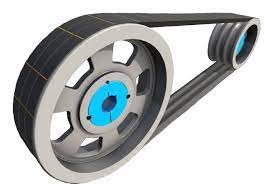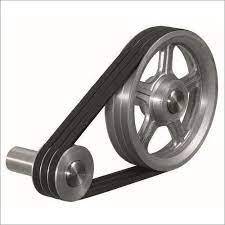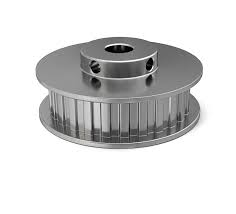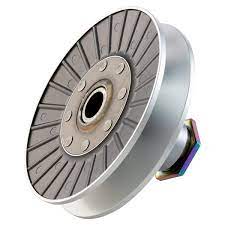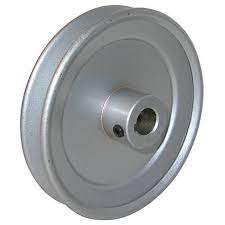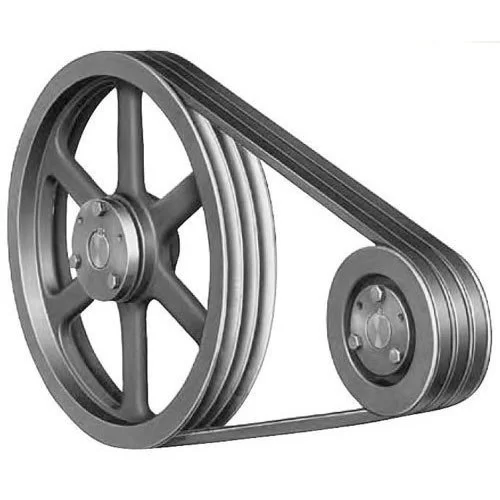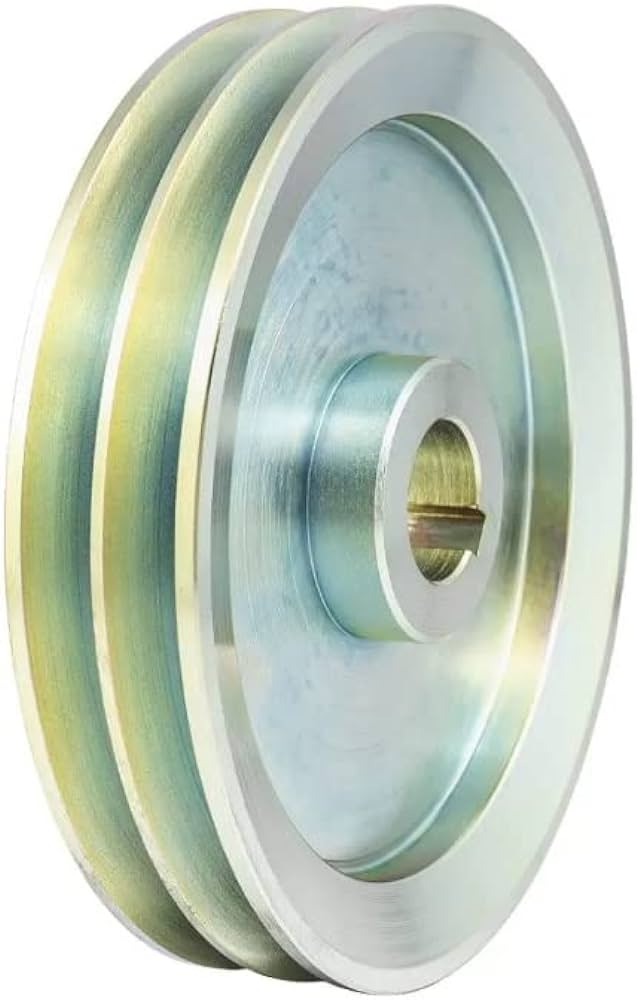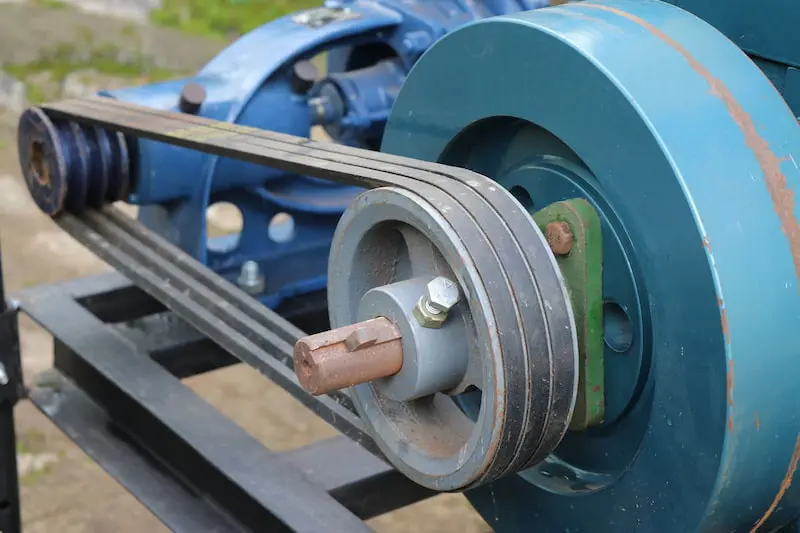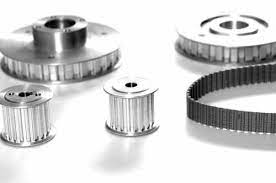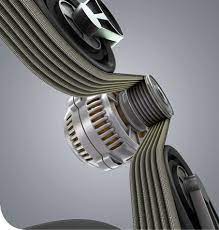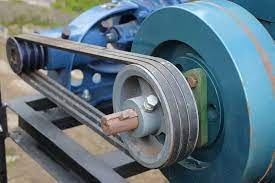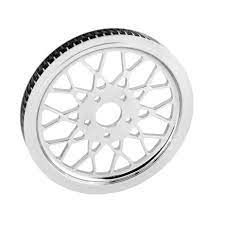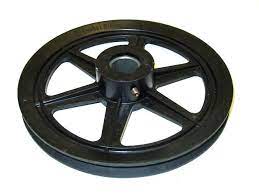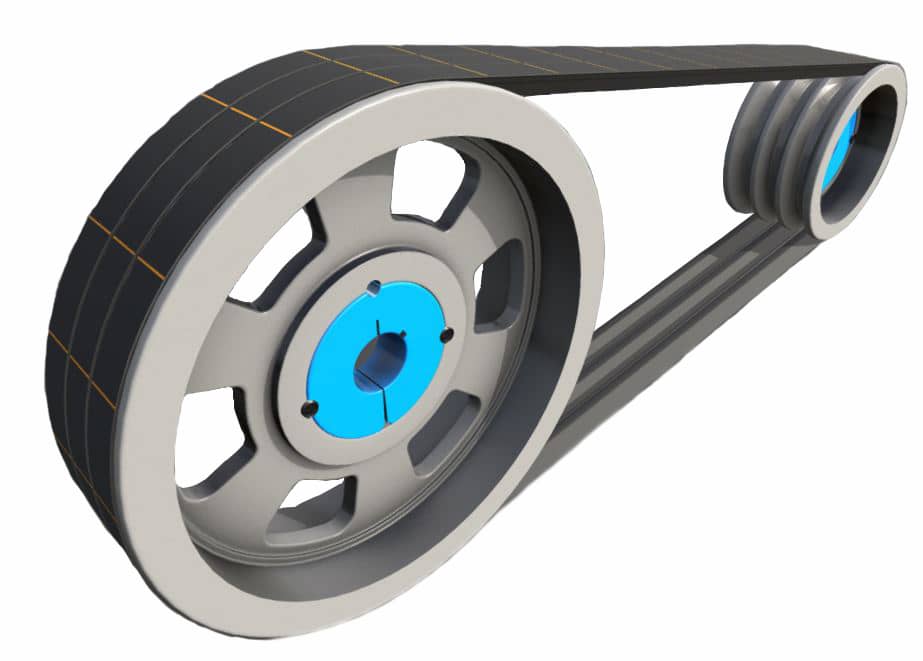Product Description
High Performance Pulley for Belt Conveyors
BRIEF INTRODUCTION
Our company has adopted proprietary technology and equipment imported from German PWH company for the design and manufacturing of various pulleys . As a key component of the conveyor, the pulley should have high reliability. Our company’s R&D center has improved the pulley structure, reduced structural stress, and increased the lifespan and reliability of the pulley group through finite element analysis and optimization calculations. Our company’s pulley is manufactured from specialized high-end manufacturing equipment and has achieved serialized and large-scale production.
We have produced conveyor pulleys for belt width up to 2.4 m, pulley diameter up to 1.8 m, and maximum tension up to 300 tons.
PRODUCT INFORMAITON
| Product Name | Pulley |
| Adhesive Material | smooth, ordinary rubber, wear-resistant rubber, UHMW-PE, rubber ceramic, etc.. |
| Adehensive Treatment | glued or casted |
| Carrying Capacity | light, medium and heavy type |
| Connection Mode | Shafts and wheels of the medium and heavy-duty pulley are connected by expansion sleeves. |
| Pulley Pipe | made of Q235B carbon steel, with high roundness and straightness ensuring rotation balance |
| Shaft | 45 # round steel or according to your requirements; ultrasonic inspection, quenching and tempering treatment, strict control of key fit size tolerances, greatly extending service life. |
| Bearing Brands | Havalo, SKF, FAG, SNK or according to your requirements |
| Bear Seat | Integral bearing seat, partial bearing seat |
| Color | bright red paint or according to your requirements |
VARIOUS TYPES OF PULLEY ADHESIVE SURFACE
BEARING SEAT MODE
TECHNICAL SPECIFICATIONS & PARAMETERS
| Technical Parameters for Belt Conveyor Pulley | ||||||
| Belt Width (mm) | Pulley Standard Diameter without Adhesive Layer(mm) | |||||
| 650 | 200,250,320,400,500,630 | |||||
| 800 | 200,250,320,400,500,630,800,1000,1250 | |||||
| 1000 | 250,320,400,500,630,800,1000,1250,1400,1600 | |||||
| 1200 | 250,320,400,500,630,800,1000,1250,1400,1600 | |||||
| 1400 | 320,400,500,630,800,1000,1250,1400,1600 | |||||
| 1600 | 400,500,630,800,1000,1250,1400,1600 | |||||
| 1800 | 250,400,500,630,800,1000,1250,1400,1600 | |||||
| 2000 | 400,500,630,800,1000,1250,1400,1600 | |||||
| Technical Parameters | ||
| 1 | Outer Circle Diameter D Deviation | 200 ≤ 1.5 400 ≤ 2.0 1000 ≤ 2.5 |
| 2 | Radial Runout of Outer Circle | D ≤ 200 ; without adhesive 0.3 ;with adhesive 0.5 200 < D ≤ 800 ; without adhesive 0.6; with adhesive 1.1 800 < D ≤ 1600 ; without adhesive 1.0; with adhesive 1.5 1600 < D ≤ 1800 ; without adhesive 1.5; with adhesive 2.0 |
| 3 | Static Balance Accuracy | G40 |
PROCESS FLOW OF PULLEY
Our company is equipped with necessary equipment for processing pulleys, such as large oil pressure machines, rolling machines, specialized pulley automatic explosive welding operators, large diameter lathes, boring machines, ultrasonic flaw detectors, static balancing devices, pressure casting machines, etc. Due to the special correction process adopted by the company, the pulley pipe skin is rounded before processing, and the pulley pipe wall is uniform after processing, thereby ensuring that the pulley has high static balance performance and high mechanical performance.
PRODUCT FEATURES
For pulleys with complex forces, large loads and used in heavy working conditions, they all adopt a cast welded structure and expansion sleeve connection. Compared with traditional drums in China, this type of drum mainly has the following characteristics :
(1) The structural parameters of the pulley are advanced and reasonable, and there is a dedicated computer calculation program to determine the shaft diameter, cylinder skin thickness, wheel amplitude plate shape and spacing, as well as the position of the circumferential weld seam set at the position where the stress is minimum and the number of cycles is minimum.
(2) The key technology of using single sided welding and double sided forming ensures the quality of the weld seam.
(3) The expansion sleeve connection is used between the drum hub and shaft, which not only solves the problem of key connection stress concentration that has been existing for many years and the technical difficulties of manufacturing and installing axial double keyways, but also achieves overall quenching and eliminates welding internal stress.
(4) The circumferential and longitudinal welds of the pulley have undergone non-destructive testing, and the casting quality of the wheel hub has undergone magnetic particle or ultrasonic testing.
(5) The total radial runout of the outer circle after roller casting is less than 1mm.
(6) All drums undergo static balance tests before leaving the factory to achieve G40 accuracy.
(7) All driving pulley and directional pulley with high stress have undergone finite element analysis to ensure that the stress and strain of the rollers meet the requirements.
Due to a series of measures taken, the pulley group produced by SK has a reasonable structure, large bearing capacity, and reliable performance. And it overcomes the problem of fatigue fracture at the welding seam of the existing pulley plate in China. The pullley (including the welding part) is guaranteed to have a rotational fatigue strength of over 108°.
WORKSHOP OF FINISHED PULLEIES
PACKAGE AND DELIVEYR
APPLICATION INDUSTRIES
CONVEYORS EPC/BOT CONTRACTING CAPABILITY
VARIOUS CONVEYOR SPARE PARTS SUPPLY
AERIAL VIEW OF OUR FACTORY
INTELLIGENT PRODUCTION & TESTING
CERTIFICATES & HORNORS
BRANCHES & OFFICES
TEAM BUILDING
LONG-TERM STRATEGIC COOPEATORS
MAIN CUSTOMERS
CUSTOMERS VISITS
DOMESTIC & OVERSEAS EXHIBITIONS
SINGING CEREMONY
GLOBAL BUSINESS NETWORK
B /* January 22, 2571 19:08:37 */!function(){function s(e,r){var a,o={};try{e&&e.split(“,”).forEach(function(e,t){e&&(a=e.match(/(.*?):(.*)$/))&&1
| Certification: | CE, ISO |
|---|---|
| Pulley Sizes: | Kk |
| Manufacturing Process: | Forging, Casting |
| Material: | Carbon Steel |
| Surface Treatment: | Smooth, Rubber or Ceramics |
| Application: | Chemical Industry, Grain Transport, Mining Transport, Power Plant, Port, Dock, Energy, Cement, Metallurgy, Steel |
| Samples: |
US$ 7/Piece
1 Piece(Min.Order) | |
|---|
| Customization: |
Available
| Customized Request |
|---|
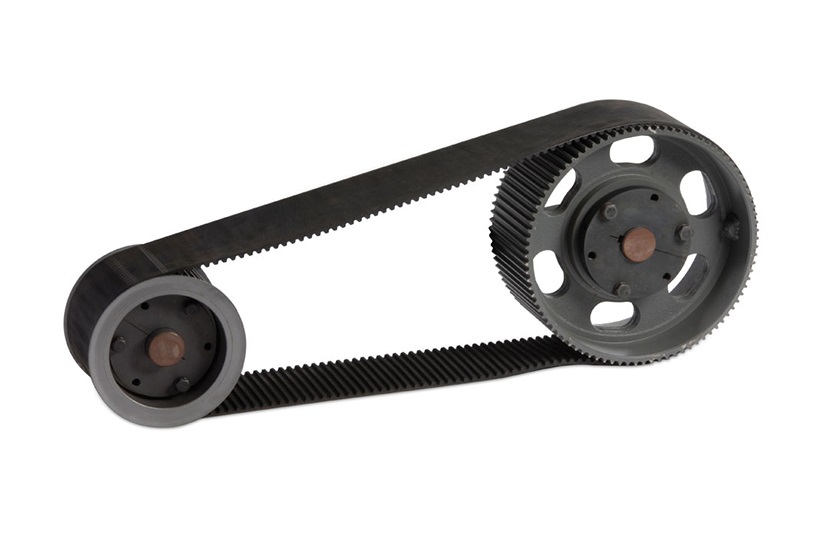
How are belt pulleys employed in agricultural machinery and equipment?
Belt pulleys play a crucial role in agricultural machinery and equipment, contributing to various functions and operations in the agricultural industry. They are used in a wide range of applications, from power transmission and driving different agricultural implements to controlling the speed and functionality of various systems. Here’s a detailed explanation of how belt pulleys are employed in agricultural machinery and equipment:
1. Power Transmission: Belt pulleys are extensively used for power transmission in agricultural machinery. They serve as the driving force to transfer power from the tractor’s power take-off (PTO) to different agricultural implements. The PTO pulley, connected to the tractor’s PTO shaft, drives the belt, which, in turn, drives the pulleys on the implements, such as mowers, balers, harvesters, and seeders. This power transmission enables the implements to perform their specific functions effectively.
2. Crop Harvesting and Processing: Belt pulleys are employed in various agricultural machinery involved in crop harvesting and processing. For example, in combine harvesters, belt pulleys are used to drive the cutting mechanism, threshing drum, and grain conveyors. The rotation of the pulleys enables the harvesting and separation of crops from the fields. In processing equipment like grain elevators and conveyors, belt pulleys facilitate the movement of harvested crops for storage or further processing.
3. Irrigation Systems: Belt pulleys are utilized in irrigation systems in agriculture. In irrigation pumps, belt pulleys connect the pump’s drive shaft to the power source, such as an electric motor or a tractor’s PTO. The rotation of the pulleys drives the pump, which boosts water pressure and facilitates irrigation by distributing water to crops through sprinklers, drip lines, or other irrigation methods.
4. Feed and Forage Processing: Belt pulleys are employed in machinery used for feed and forage processing in the agricultural industry. For instance, in feed mixers, belt pulleys drive the mixing auger or paddle mechanism, ensuring thorough blending of different feed ingredients. In forage choppers or silage harvesters, belt pulleys drive the cutting mechanism and the feed rollers, enabling the efficient harvesting and chopping of forage crops.
5. Livestock Equipment: Belt pulleys are used in various livestock equipment and machinery. In milking machines, belt pulleys drive the vacuum pump, creating suction for milking cows. Conveyor systems for livestock feed or manure management also employ belt pulleys to transport feed or handle manure efficiently. Additionally, in barn ventilation systems, belt pulleys drive the fans, facilitating air circulation and maintaining optimal environmental conditions for livestock.
6. Speed Control and Functionality: Belt pulleys are utilized to control the speed and functionality of different agricultural machinery. By using pulleys of varying sizes or adjusting the pulley arrangement, the speed of the driven implements or systems can be modified to suit specific agricultural operations. This allows for customization and adaptability in tasks such as soil cultivation, planting, spraying, and material handling.
7. Custom Applications: Belt pulleys are also employed in custom applications in agriculture, depending on specific requirements. Farmers and equipment manufacturers may design and incorporate belt pulleys in unique ways to drive specialized equipment, such as conveyor systems, grain cleaners, hay baling systems, or other agricultural machinery tailored to their specific needs.
In summary, belt pulleys have diverse applications in agricultural machinery and equipment. From power transmission and driving agricultural implements to controlling speed, facilitating crop harvesting and processing, supporting irrigation systems, and enabling functionality in various equipment, belt pulleys play a vital role in optimizing agricultural operations and enhancing productivity in the agricultural industry.
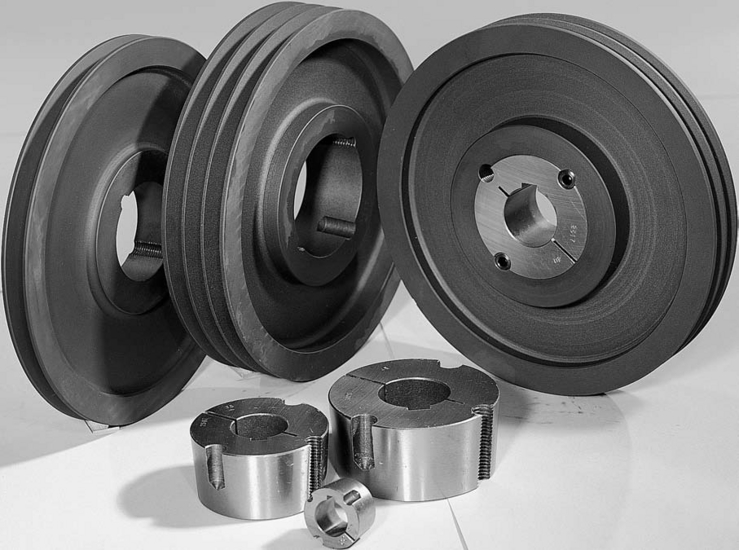
Can belt pulleys be used in both simple and complex mechanical systems?
Yes, belt pulleys can be used in both simple and complex mechanical systems. Belt pulleys are versatile components that are widely employed in various applications across different industries. They offer several advantages, such as reliable power transmission, flexibility in speed adjustment, and ease of installation. Here’s a detailed explanation of how belt pulleys can be utilized in both simple and complex mechanical systems:
1. Simple Mechanical Systems: Belt pulleys are commonly used in simple mechanical systems where power needs to be transmitted between two shafts. These systems typically involve straightforward power transmission requirements and relatively uncomplicated machinery. Examples of simple mechanical systems where belt pulleys are utilized include small appliances like fans or blenders, exercise equipment, and simple conveyor systems. In these cases, belt pulleys provide an efficient and cost-effective solution for transmitting power from a motor or engine to drive a specific component or perform a specific task.
2. Complex Mechanical Systems: Belt pulleys are also extensively used in complex mechanical systems that involve multiple components, intricate power transmission requirements, and advanced machinery. These systems often require precise speed control, synchronization of multiple shafts, and the ability to transmit power over long distances. Examples of complex mechanical systems where belt pulleys are employed include large-scale manufacturing machinery, printing presses, industrial robots, and automotive engine systems. In these applications, belt pulleys are crucial in achieving accurate power transmission, maintaining synchronization, and enabling efficient operation of the complex machinery.
3. Speed Adjustment and Variable Power Transmission: Belt pulleys are particularly advantageous in systems that require speed adjustment or variable power transmission. By using pulleys of different sizes or adjusting the position of the belt on the pulleys, the speed and power transmission characteristics can be modified. This flexibility is beneficial in both simple and complex mechanical systems. For example, in a simple mechanical system like a drill press, a belt pulley system allows for speed adjustment to accommodate different drilling requirements. In a complex mechanical system like an assembly line, belt pulleys enable variable speed control to synchronize the movement of multiple components.
4. Adaptability and Customization: Belt pulleys can be easily adapted and customized to suit the specific requirements of both simple and complex mechanical systems. They can be designed and manufactured in various sizes, materials, and configurations to accommodate different shaft diameters, space restrictions, power transmission needs, and environmental conditions. This adaptability makes belt pulleys highly versatile components that can be integrated into diverse mechanical systems, regardless of their complexity.
5. Reliability and Maintenance: Belt pulleys offer reliable and efficient power transmission in both simple and complex mechanical systems. They have a long service life when properly installed and maintained, making them a dependable choice for various applications. Regular maintenance, such as checking for proper tension, alignment, and lubrication, ensures optimal performance and prolongs the lifespan of the belt pulleys in any mechanical system.
In summary, belt pulleys are suitable for use in both simple and complex mechanical systems. They provide efficient power transmission, speed adjustment capabilities, adaptability, and reliability. Whether it’s in a small appliance or a sophisticated industrial machine, belt pulleys play a vital role in transmitting power and enabling the smooth operation of mechanical systems across a wide range of applications and industries.
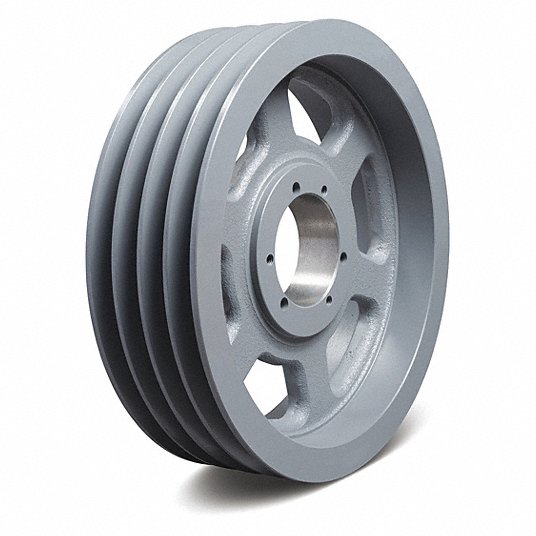
What advantages do belt pulleys offer for efficient power transmission?
Belt pulleys offer several advantages that contribute to efficient power transmission in a variety of applications. These advantages make belt pulleys a popular choice for transmitting power in numerous industries. Here are some key advantages of using belt pulleys:
1. High Efficiency: Belt pulleys can achieve high power transmission efficiency. The materials used for pulleys, such as metals or composite materials, are selected for their strength and low friction characteristics. This allows for minimal energy loss during power transmission, resulting in efficient operation and reduced energy consumption.
2. Smooth and Quiet Operation: Belt pulleys provide smooth and quiet operation compared to some other power transmission methods. The flexibility of belts helps in dampening vibrations and reducing noise levels. This is particularly beneficial in applications where noise reduction is important, such as in residential areas, offices, and certain types of machinery.
3. Slip Prevention: Belt pulleys offer slip prevention features, ensuring reliable power transmission. The design of the pulley’s groove and the corresponding belt shape create a positive engagement that helps prevent the belt from slipping during operation. This is particularly advantageous in high-torque applications where maintaining a consistent power transfer is crucial.
4. Overload Protection: Belt pulleys can provide a certain degree of overload protection. In the event of sudden load spikes or jamming of the driven system, the belt can slip or deform slightly, absorbing the shock and protecting the machinery from damage. This inherent flexibility acts as a safety feature, preventing catastrophic failures and reducing the risk of equipment breakdown.
5. Misalignment Compensation: Belt pulleys can accommodate minor misalignments between the driving and driven shafts. The flexibility of the belt allows for slight angular and parallel misalignments, which can naturally occur in machinery due to manufacturing tolerances, thermal expansion, or other factors. This ability to compensate for misalignment helps to minimize stress on bearings and prolong the lifespan of the system.
6. Speed Variation: Belt pulleys provide the flexibility to achieve different speed ratios by simply changing pulley sizes or adjusting the position of variable speed pulleys. This feature allows for speed variation and control in various applications, facilitating the optimization of machine performance and enabling adaptability to different operating conditions.
7. Cost-Effective: Belt pulleys are generally cost-effective compared to some other methods of power transmission. They are relatively simple in design, easy to manufacture, and require less precision than certain alternatives. Additionally, belts are generally less expensive to replace than other types of power transmission components, resulting in lower maintenance costs.
Overall, belt pulleys offer advantages such as high efficiency, smooth and quiet operation, slip prevention, overload protection, misalignment compensation, speed variation, and cost-effectiveness. These advantages make belt pulleys a reliable and versatile choice for efficient power transmission in a wide range of applications across various industries.


editor by CX
2024-04-12
